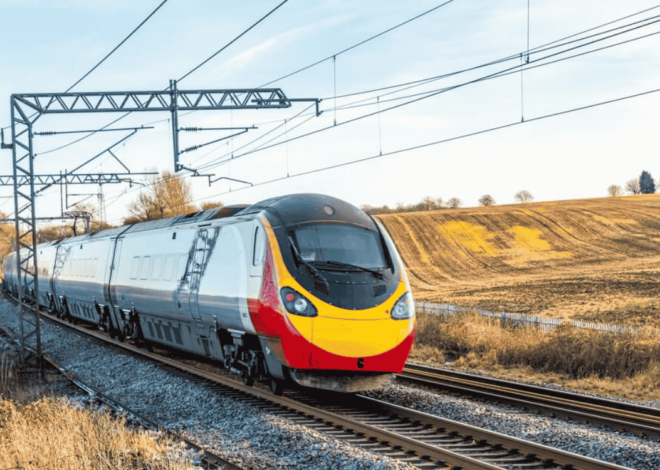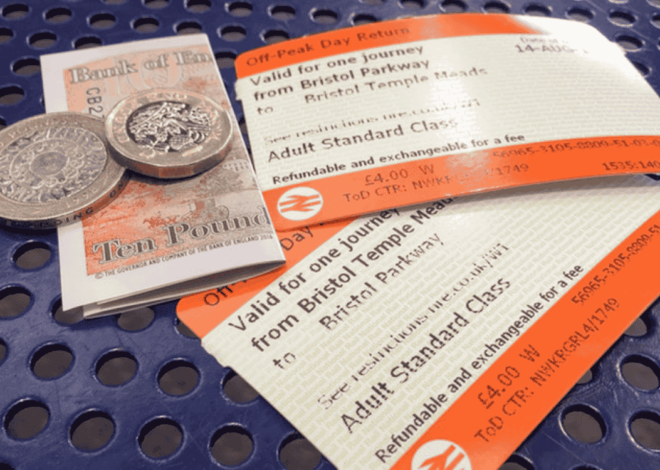
Raileasy vs. Traditional Booking: Which One Reigns Supreme?
In an age where efficiency and cost-effectiveness are paramount, choosing the right method for booking train tickets can significantly impact your travel experience. The advent of online platforms has transformed traditional booking practices, with services like Raileasy emerging as formidable contenders. This article delves into the nuances of Raileasy and traditional booking methods, examining their respective advantages and disadvantages.
The Evolution of Train Ticket Booking
Historically, booking train tickets required a visit to a physical station, where travelers often encountered long queues and limited information. Traditional booking systems primarily involved human interaction, where staff provided assistance, albeit with constraints regarding the availability of routes and fares. Such methods, while personal, frequently led to inefficiencies and lack of transparency.
The digital revolution has disrupted this model. Online platforms such as Raileasy have simplified the process, offering a streamlined approach that emphasizes user-friendliness and accessibility. With the rise of these services, travelers are now faced with an important decision: should they continue relying on traditional booking methods, or embrace innovative platforms that promise enhanced convenience?
The Appeal of Traditional Booking
For some, traditional booking remains appealing due to its nostalgic charm. The experience of conversing with a ticket agent, who can offer personalized insights and recommendations, carries an intrinsic value. Additionally, older generations or those less familiar with technology may find comfort in face-to-face interactions.
Moreover, traditional methods often allow for immediate resolution of issues. If a traveler encounters a problem with their ticket, they can swiftly address it with an agent. This immediacy can alleviate anxiety associated with digital transactions, particularly for those who are wary of online platforms.
However, the limitations of traditional booking become evident upon closer inspection. The reliance on physical locations often means restricted operating hours and geographical constraints. Moreover, the potential for human error is ever-present, leading to inaccuracies in ticketing and scheduling.
Raileasy: A Modern Solution
Raileasy represents a modern alternative to traditional booking. This platform offers a plethora of options, ensuring travelers can find the best fare for their journey. One of its standout features is the ability to utilize split train tickets. This innovative approach allows users to divide their journey into multiple segments, often resulting in substantial savings. By booking separate legs of a trip rather than a direct route, travelers can sometimes achieve lower overall fares.

In a world where budget considerations reign supreme, the ability to save money while traveling is invaluable. With Raileasy’s intuitive interface, users can effortlessly navigate their options, comparing prices and routes at a glance. This level of transparency fosters informed decision-making, empowering travelers to select the most cost-effective solutions.
The Advantage of Raileasy SplitSave
One of the hallmark features of Raileasy is its Raileasy splitsave functionality. This innovative tool automatically identifies opportunities for travelers to save by booking split tickets. By analyzing various journey options, Raileasy presents users with the most economical fares, often without requiring them to manually search for individual tickets.
The process of utilizing the Raileasy splitsave feature is remarkably straightforward. Travelers simply input their desired journey details, and the platform does the rest, pinpointing the most advantageous combinations of tickets. This efficiency not only enhances user experience but also significantly reduces the time spent searching for the best fares.
Furthermore, the integration of technology allows Raileasy to continuously update its pricing based on real-time data. This responsiveness ensures that travelers benefit from the most current fare structures, a feature that traditional booking methods cannot compete with.
Comparative Analysis: Features and Usability
When assessing the usability of both booking methods, Raileasy emerges as a frontrunner. The user-friendly interface is designed with the traveler in mind, minimizing complexity and maximizing efficiency. Conversely, traditional booking can be cumbersome, often requiring extensive navigation through various systems.

In terms of features, Raileasy offers a robust set of tools tailored to modern travelers. With functionalities such as fare alerts, journey planners, and detailed route information, the platform stands out. Users can customize their searches based on preferences such as travel time, number of changes, and, of course, price.
Traditional methods lack these comprehensive features. While they may provide basic ticketing options, they do not offer the depth of information available through platforms like Raileasy. As travel becomes increasingly dynamic, the need for adaptable and informative systems becomes more pronounced.
Transparency and Pricing
Pricing is a critical aspect that influences travelers’ choices. Traditional booking often involves opaque pricing structures, where additional fees and surcharges can accumulate unexpectedly. This lack of transparency can lead to frustration and dissatisfaction among consumers.
In contrast, Raileasy champions clarity in pricing. By providing a detailed breakdown of costs, travelers can understand precisely what they are paying for. The ability to view different pricing options, including the potential savings from split train tickets, further enhances this transparency.
Moreover, Raileasy regularly updates its fares based on market fluctuations, ensuring users have access to the best available prices. This real-time pricing strategy contrasts sharply with traditional booking, which can be stagnant and often fails to reflect current market conditions.
The Human Element vs. Technological Efficiency
While technology undoubtedly offers numerous advantages, the human element in traditional booking should not be dismissed entirely. For some travelers, personal interactions can enhance their overall experience. Knowledgeable staff can provide insights that automated systems may overlook, particularly regarding regional nuances and hidden gems along the journey.
However, the rapid advancement of technology has rendered many of these interactions less relevant. Travelers increasingly prefer efficiency, valuing the ability to manage their bookings independently. With platforms like Raileasy, users can take control of their travel arrangements without the potential delays associated with traditional booking.
Conclusion: The Future of Train Travel Booking
In the ongoing debate between Raileasy and traditional booking methods, it is clear that modern travelers are leaning toward technology-driven solutions. The convenience, efficiency, and cost savings offered by platforms like Raileasy are compelling arguments for their adoption.
The ability to utilize Raileasy Split Train Tickets and the innovative Raileasy splitsave feature further solidifies its position as a leader in the field. As travel continues to evolve, those who embrace these advancements will likely find themselves better equipped to navigate the complexities of modern transportation.
Ultimately, the choice between Raileasy and traditional booking hinges on individual preferences. While some may cherish the nostalgia of face-to-face interactions, the practicality of digital platforms cannot be overstated. For most, the advantages of utilizing Raileasy far outweigh the merits of traditional methods, heralding a new era in train travel booking.








